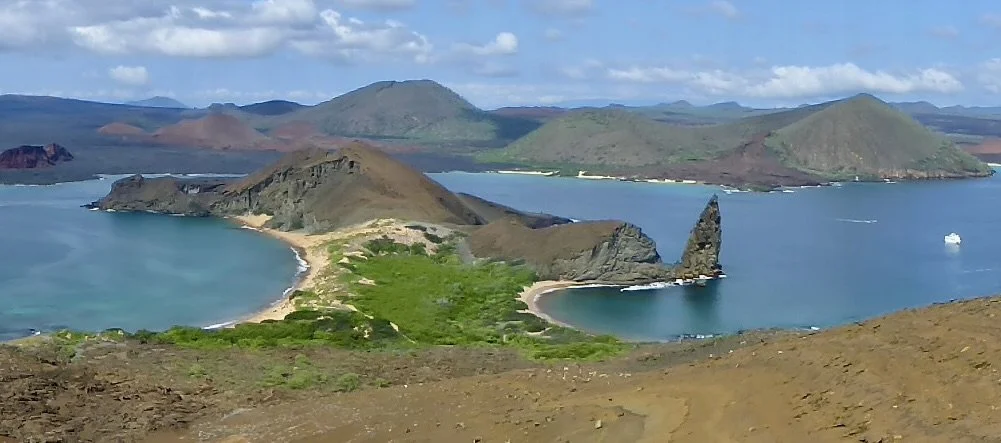The Galapagos Islands
are a chain of oceanic volcanic islands that sit in the Pacific Ocean about 500 miles off the western coast of Ecuador. The islands’ unique ecosystem and endemic animal species draw wildlife lovers from across the globe. These are some of the same things that intrigued Charles Darwin, the noted naturalist, who developed his theory of evolution, in part, by studying the unique fauna and species of the islands when he visited in 1835. Because the islands are located on the Equator, the climate is warm year round. All travel to these protected islands has to be done by registered travel agencies/companies with certified naturalist guides. More than 20% of the marine species in Galapagos are found nowhere else on earth.
Species Arrival
Five to ten million years ago, the tops of underwater Galapagos volcanoes appeared above water for the first time Those volcanic peaks were completely devoid of plant and animal life. All plants and animals that are now native to the islands must have arrived to the islands originally through some form of long-distance dispersal. The most unique feature about the Galapagos Islands - the animals/species have no fear of interacting with humans.
Why The Galapagos Islands ?
Evolutionary Biologists are fascinated by island ecosystems and the clarity with which the species that inhabit them illustrate evolutionary processes. For this reason, as well as a world-changing historic visit from a man named Charles Darwin on a ship named the HMS Beagle, the Galapagos Islands are quite arguably the most studied archipelago in the world. Some islands were declared wildlife sanctuaries in 1934, and the archipelago officially became a national park in 1959. Organised Galapagos tours began in the late 1960's.
Biodiversity brings over 100,000 visitors each year to these remote islands that were totally unknown to the world until 1535. Without the influence of a human presence, the island's flora and fauna, and the surrounding marine life, thrived for thousands of years by evolving into unique species you won't find anywhere else in the world, such as the charismatic giant tortoises and blue-footed boobies.
Two New Intrepid Travelers (+ parents)
will be joining Kathy and I on this voyage - following the footsteps of Charles Darwin. What a joy to share our love of travel with Hannah (14) and Jack(12) our grandkids. Hopefully this trip will encourage them to see and experience other unique places around the world.








